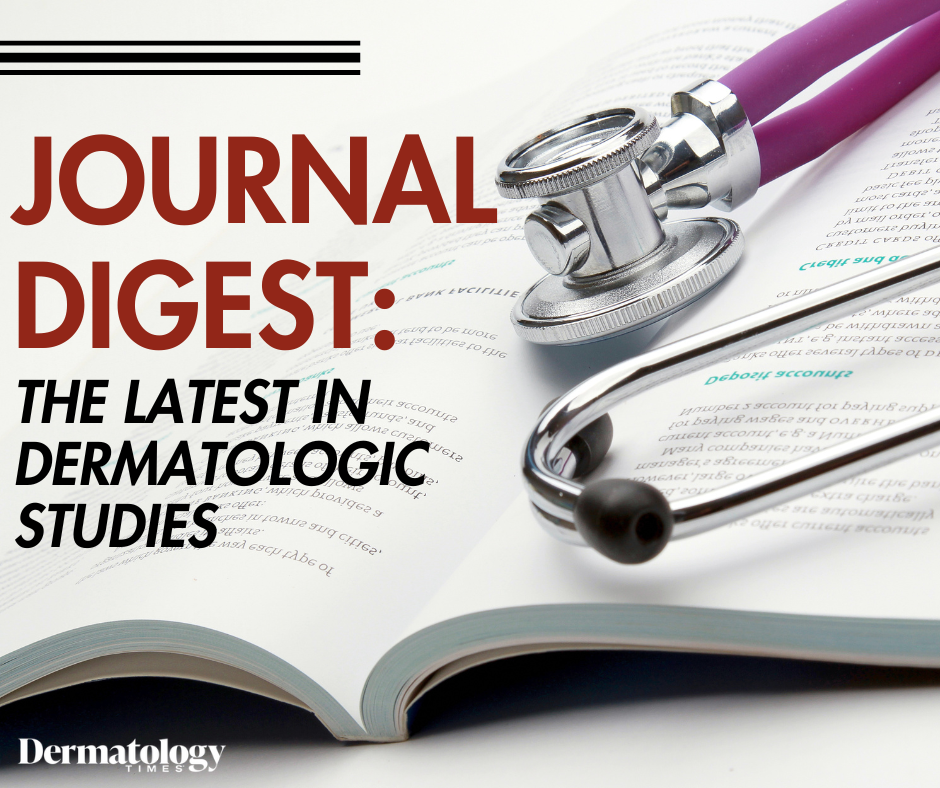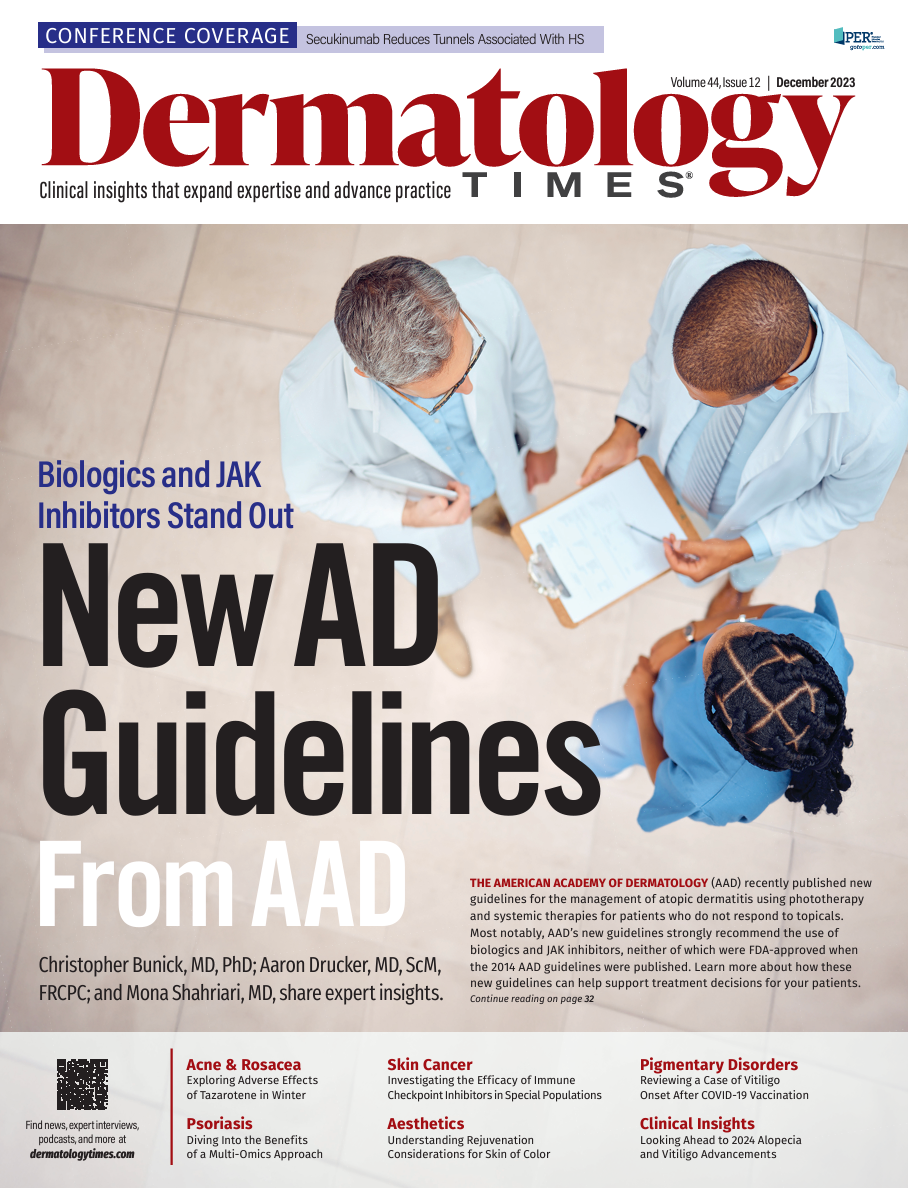- Case-Based Roundtable
- General Dermatology
- Eczema
- Chronic Hand Eczema
- Alopecia
- Aesthetics
- Vitiligo
- COVID-19
- Actinic Keratosis
- Precision Medicine and Biologics
- Rare Disease
- Wound Care
- Rosacea
- Psoriasis
- Psoriatic Arthritis
- Atopic Dermatitis
- Melasma
- NP and PA
- Skin Cancer
- Hidradenitis Suppurativa
- Drug Watch
- Pigmentary Disorders
- Acne
- Pediatric Dermatology
- Practice Management
- Prurigo Nodularis
- Buy-and-Bill
News
Article
Dermatology Times
The Journal Digest: November 15
Author(s):
This week’s collection of the latest dermatologic studies covers atypical molluscum contagiosum lesions with a CD30-positive T-cell lymphoid infiltrate, comorbidities in pediatric psoriasis, tralokinumab for adolescents with severe AD, and intralesional bleomycin combined with lidocaine for recalcitrant keloid scars.

The American Journal of Dermatopathology: Molluscum Contagiosum–Associated Atypical CD30-Positive Lymphomatoid Papulosis-like Infiltrate: Report of Three Cases
AbdullGaffar et al’s study underscores the diagnostic intricacies dermatologists face when treating atypical molluscum contagiosum lesions with a CD30-positive T-cell lymphoid infiltrate. Their research emphasizes the necessity of obtaining biopsy samples from various lesions for accurate diagnosis, particularly when initial sections may lack definitive features. Dermatologists are urged to be vigilant about potential confusion with primary cutaneous CD30-positive lymphoproliferative disorders and to conduct thorough pathological evaluations. Lastly, the study highlights the value of recognizing inflamed molluscum lesions and differentiating them from lymphomatoid papulosis, emphasizing the need for comprehensive assessment to ensure precise diagnosis and appropriate patient management.
Indian Journal of Dermatology: Comorbidities in Paediatric Psoriasis: Experience From a Tertiary Care Centre
Mendiratta et al’s study explored the comorbidities associated with pediatric psoriasis, a “less studied” aspect of pediatric psoriasis. Among the 100 patients analyzed from a dermatology clinic over a 4-year period, the most common psoriasis subtype was plaque psoriasis (61%), with 52% of patients classified as overweight or obese. Notably, 66% of patients demonstrated at least one lipid abnormality, emphasizing the link between psoriasis and metabolic issues. The study highlighted the need for heightened awareness and early management of comorbidities in pediatric psoriasis globally.
Journal of the European Academy of Dermatology & Venereology: Tralokinumab Improves Clinical Scores in Adolescents With Severe Atopic Dermatitis: A Real-Life Multicentric Observational Study
De Greef et al’s retrospective study assessed the real-world effectiveness and safety of tralokinumab, an interleukin-13-specific monoclonal antibody, in adolescents aged 12 to 17 with severe atopic dermatitis (AD). The cohort, consisting of 14 adolescents with refractory AD, demonstrated significant improvement in Eczema Area and Severity Index (EASI) and Peak Pruritus Numerical Rating Scale (PP-NRS) scores after 12 to 16 weeks of treatment with tralokinumab. Notably, 28.6% of patients achieved EASI 75, and 42.8% experienced a 4-point or higher reduction in PP-NRS. The study highlighted tralokinumab's efficacy and tolerability in adolescents, offering valuable insights into real-world outcomes and suggesting potential benefits in challenging AD phenotypes.
Lasers in Surgery and Medicine: Needle-Free Electronically-Controlled Jet Injector Treatment With Bleomycin and Lidocaine is Effective and Well-Tolerated in Patients With Recalcitrant Keloids
Bekkers et al’s study represents the first evaluation of the effectiveness of EPI-assisted intralesional bleomycin combined with lidocaine treatment in recalcitrant keloid scars. Their results showed that the treatment was well-tolerated and effective in reducing keloid size and improving patient-reported outcomes. The majority of patients completed the course of 3 consecutive treatments, and the median interval between treatments was 5 weeks. The Patient and Observer Scar Assessment Scale scores were significantly improved at follow-up compared to baseline. Four out of 15 patients did not show any improvement post-treatment, and those non-responders had considerably thicker, stiffer, and larger keloids than other patients.
What new studies are most important to you? Share with us by emailing DTEditor@mmhgroup.com.







